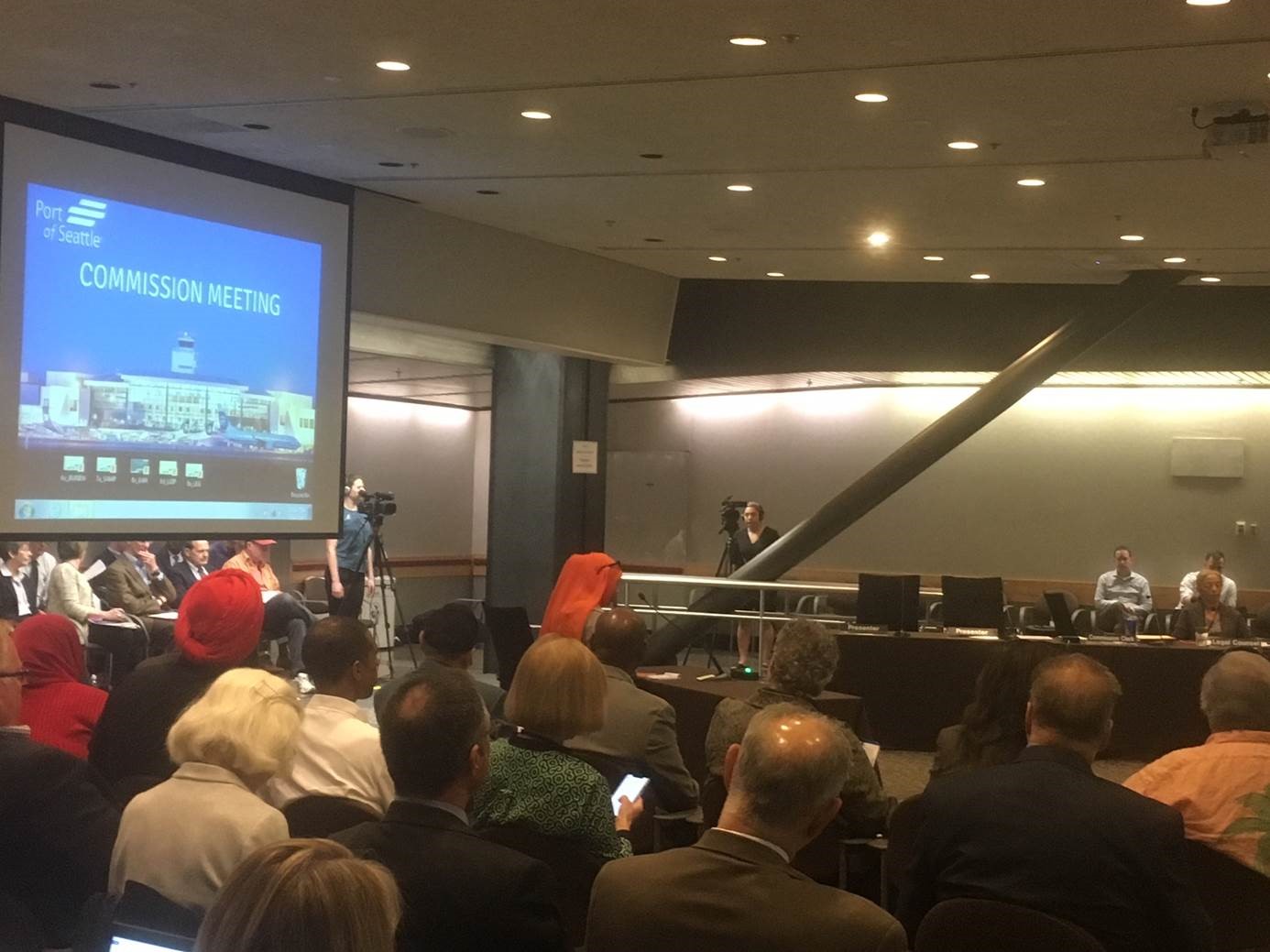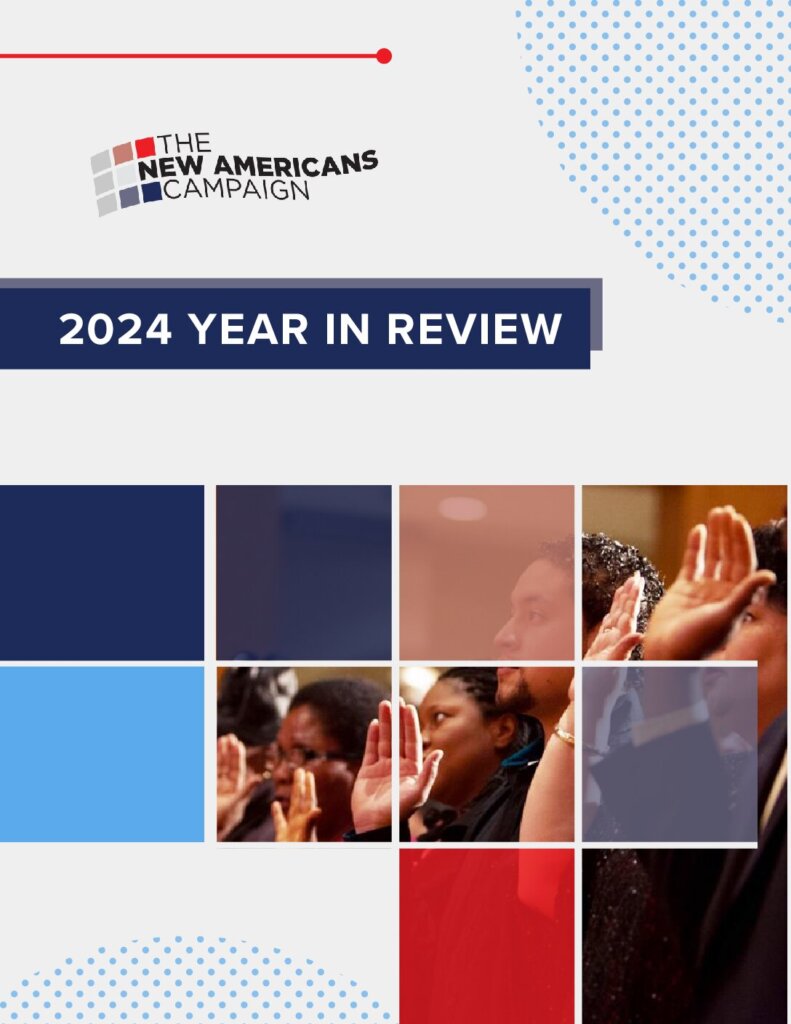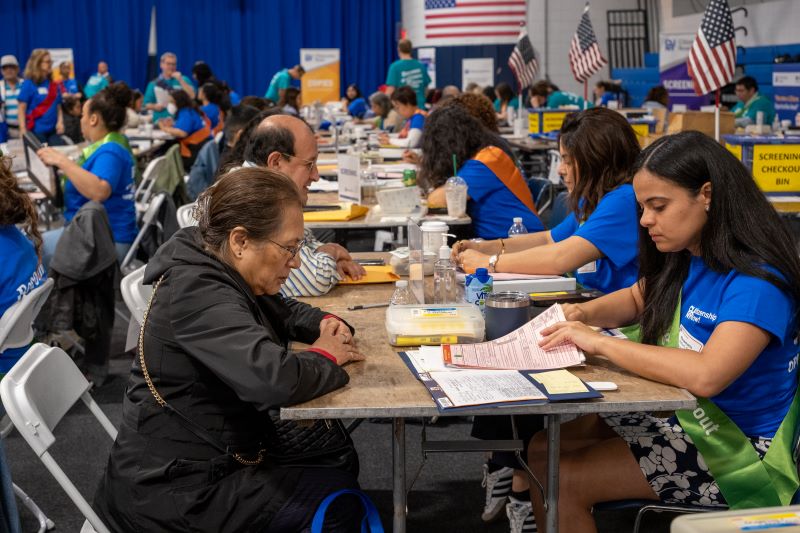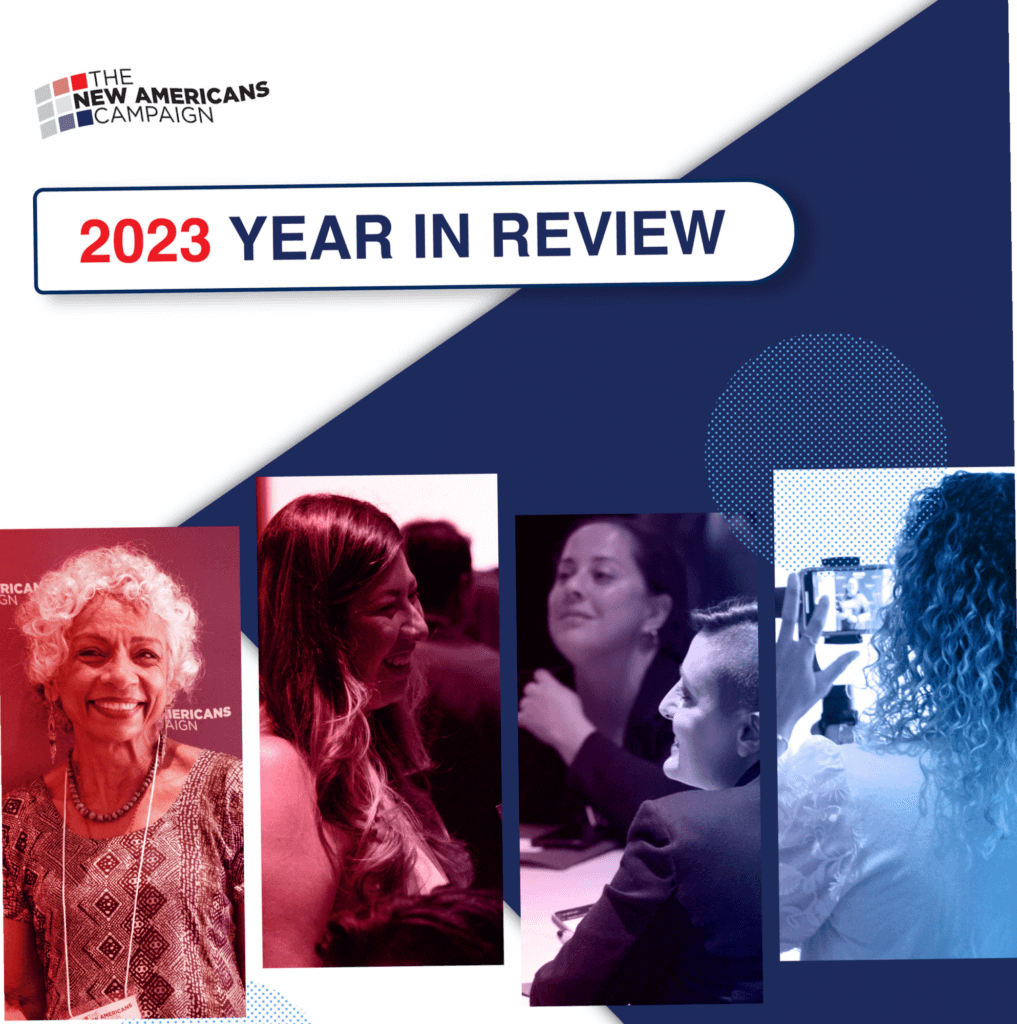A New Gateway to Citizenship

Explore More
Sea-Tac, the Seattle-Tacoma airport, is an international gateway for visitors and residents to a city where 1-in-4 residents is foreign born. For green-card holders who travel abroad, returning home can be nerve-wracking no matter how long anyone has lived in the United States. Do you have the correct travel documents? Will immigration agents have a reason to detain you? After the first Muslim travel ban in January 2017, scenes of airport chaos and unexpected detentions pushed the levels of anxiety for non-citizens even higher.
The Seattle New Americans Campaign, co-led by OneAmerica, has been working with the Port of Seattle Commission to find ways to help alleviate that stress. One sure-fire way for a qualified lawful permanent resident (LPR) to pass through any U.S. port of entry more easily is to become a U.S. Citizen. This is why the New Americans Campaign is engaging in the Red, White & Blue: Time for Citizenship campaign with airport authorities. The New Americans Campaign estimates that 44 percent of LPRs eligible to naturalize, or 3.9 million people, travel outside the United States at least once a year.
When OneAmerica proposed the Red, White & Blue: Time for Citizenship initiative to the Port of Seattle commissioners, “It didn’t really take much convincing,” says Sarah Sumadi, Senior Program Manager, at OneAmerica. “They were very supportive.” The initiative, developed by the New Americans Campaign, recognizes that ports of entry, particularly airports, have a unique opportunity to display signs to encourage eligible LPRs to think about applying for U.S. citizenship. “The goal is to remind people to think about naturalization at a time when they’re already thinking about their immigration status,” says Sumadi.
On May 8, 2018, the Port of Seattle commissioners met and unanimously agreed to participate in the Red, White & Blue: Time for Citizenship initiative and to reaffirm the port’s values and commitment to welcome and support immigrant and refugee communities at the airport and beyond. A final, formal vote is being held on May 22nd. At the meeting Commissioner Courtney Gregoire said that President Trump’s travel ban was a turning point that “did inspire a lot of hard work and hard looks at our policies, and how we could think about being a more welcoming and inclusive community, particularly in our airport.” The commissioners hold that it is their economic and moral duty to push back against the travel ban, which it has done from the beginning, when the commissioners issued a statement condemning the ban, and acknowledged that “America is great because we are a land of immigrants and that is what made us great to begin with.”
Eric Schinfeld, the Port’s Senior Manager of Federal and International Government Relations, introduced Resolution Number 3747 at the meeting and outlined its five objectives: 1) The port will not deny anyone services based on immigration status. 2) The port prohibits any port employees, including law enforcement officers to unnecessarily ask about or collect information on place of birth, citizenship or immigration status. 3) The port will not use its own resources to facilitate the enforcement of civil immigration law. 4) The port strives to make facilities feel welcome, safe and accessible to all visitors. 5) The port is committed to engaging and collaborating with local immigrant refugee communities, stakeholders and advocates.
Commissioner Gregoire highlighted the opportunity that they had before them. “The Red, White & Blue Initiative,” she explained to her colleagues and other stakeholders, “is really us coming together with the Customs and Border Protection and OneAmerica and other local non-profits, and is an opportunity to really educate folks about the benefits of citizenship —and there’s not a better place to do that, then when you’re traveling through an airport.” Schinfeld added that conversations with OneAmerica and other local partners helped the port come up with two specific actions: 1) Encouraging citizenship by creating signage to alert people traveling through the airport that they may be eligible for citizenship and that it comes with a lot of benefits. 2) Providing resources like legal counsel and other services to port employees and area community members applying for citizenship. As a result, the Port of Seattle will work with OneAmerica to host a citizenship workshop at the airport. According to Schinfeld, some 20,000 people work at Sea-Tac airport— for the Port of Seattle as well as for the concessionaires, the vendors, and the contractors. Many of them, he pointed out, are immigrants.
“Unfortunately this insidious nativism that results in something like the travel ban is something that pops up historically in the United States,” said Commissioner Ryan Calkins, “And the good news is that doing things like this push it back down. This kind of effort speaks loudly to those who support immigration and receiving refugees who are fleeing dangerous situations and are seeking simple decency so that they can continue to live their lives.” Sarah Sumadi says that the resolution is a win-win for the Seattle New Americans Campaign partners and the airport: “If more eligible people become citizens it will cut down on waiting times, and improve upon the overall security at the port of entry.”



